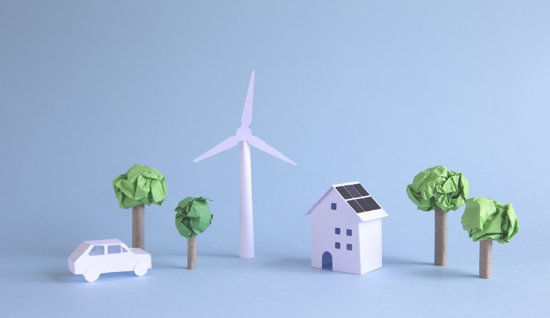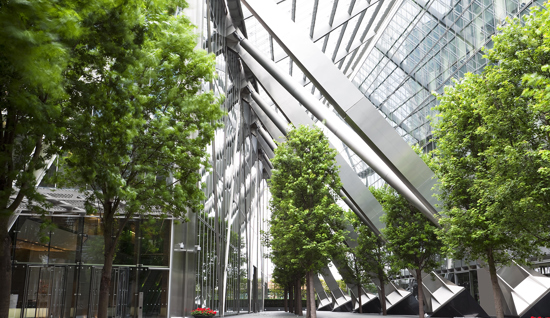
Green recovery post-COVID-19: The government’s energy white paper, with ambitious plans to power our net zero future
Contacts
For more information please contact:
As the UK government promise to ‘build back greener’, there are big targets for the UK to meet its 2050 net zero carbon ambitions. Thirteen years since a UK government, under then Labour leader, Tony Blair, has published such a paper, the much anticipated energy white paper finally landed last week; bringing with it the bold promise of decarbonisation across the entire UK economy.
The energy white paper: Powering our net zero future, alongside the Prime Minister’s ten point plan and the Climate Change Committee’s sixth carbon budget, outlines an ambitious policy and investment strategy which focuses on 220,000 new jobs and a radical shift away from fossil fuels with decisions driven by affordability. With the promise of planning reform and infrastructure investment, we now have an energy strategy in which funding and delivery of new nuclear, renewables, hydrogen and biomethane and fuel poor transition will underpin emissions reductions in a net zero future.
So, with all this policy and legislation, how should we be planning for large-scale infrastructure in a climate crisis. And what does affordable really look like?
The topic of climate change has increased in prominence as a key issue in influencing sustainable development policy making, and it is widely acknowledged that we are in the midst of a climate crisis. The UK National Infrastructure Commission (NIC) published its Design Principles for National Infrastructure in February 2020, to inform the design of infrastructure in the UK. One of the core design principles is the aim for UK infrastructure to be designed in such a way that helps set the trajectory for the UK to achieve net zero greenhouse gas emissions by 2050 or sooner.
A cross sector, multi-industry approach is crucial if we are to achieve our ambitions for net zero. All sectors will need to play their part in reducing carbon emissions, both on a construction and operational level. There are many challenges on transition to zero carbon, so what we should know to achieve the net zero target?
Planning process
Whilst there is currently no legal requirement for new buildings to be zero carbon, we are seeing a large increase in the number of local authorities who are requesting an assessment of carbon emissions be undertaken as part of the planning process, to ensure that the 2050 target can be achieved.
Where developments aren’t seen to be achieving net zero, then additional mitigation is often requested in order for the net zero target to be achieved, often an additional cost to the project. Therefore, in order for the planning process to run smoothly, it is important that carbon is considered at the beginning of the process to ensure minimal carbon emissions are integrated into the design of the project.
Lower carbon, lower cost
The grant funding regimes from both Homes England and the GLA put the delivery of net zero carbon housing as one of the conditions of claiming grant for affordable new homes. Along with the Social Housing Decarbonisation Fund Demonstrator (SHDF Demonstrator), published in September 2020, it is clear that government see the importance of zero carbon homes by supporting the development of new homes and the retrofitting of existing homes with grant funding.
If zero carbon targets are met at an operational level a building’s energy consumption will be reduced, as will the associated carbon emissions and the running costs. Lower running costs and a more energy efficient building will be attractive to buyers who are looking to save money over the longer-term. By ensuring the buildings are initially built to meet the net zero carbon target the need for any retrofitting is negated. Another cost saving for any potential buyer.
Reputation – added asset value
The climate agenda is a major issue, with organisations focusing hard as they consider how to reduce carbon emissions in their day to day operations. Therefore, low carbon developments that are already built to achieve the net zero carbon target and that are designed to reduce carbon emissions of a standard building will be more attractive for some people for the longer-term . There is consideration needed however, as not everyone will be willing (and able) to pay the increased costs of providing this type of housing.
Education as to the benefits of net zero carbon housing and the new technology required to provide it will be essential to buyers and renters alike going forwards an must include detail on the practicalities of running new systems, such as a hydrogen heating system.
Building low carbon developments will put a developer at the forefront of the market, leading the way in playing their part for the UK to meet the net zero carbon targets and will be more attractive to those considering buying and using an eco-friendly building as their office and home as an important aspect of their life. As we navigate through the COVID-19 pandemic and increasing numbers of people continue to work from home, the future of our homes as workspaces will further amplify energy consumption considerations, and lead to an increased focus on efficiency.
How to achieve low carbon?
There are two main sources of carbon emissions from new developments: embodied carbon from the construction of the building and operational carbon. Here are some steps you can take to reduce carbon emissions and achieving a low carbon development.
Embodied carbon
The main sources of embodied carbon come from the structure of the buildings and from materials such as cement, concrete and steel. Reducing the amount of such materials to what is absolutely necessary will allow large carbon savings to be made. Recycling and reusing any materials where possible, i.e. where an old development is being demolished and new building is being constructed will also reduce the amount of new materials required. Lower carbon options of materials such as concrete are becoming more readily available on the market and utilising lower carbon options will automatically reduce carbon emissions when compared to the standard material usually used.
Another aspect of embodied carbon comes from the energy supply for the construction phase and the transport associated with the transportation of materials. Where possible, utilising renewable sources of energy on the construction site and by trying to reduce the transportation of materials by using local sources will contribute to lower emissions from the construction of the development.
Operational carbon
Once a building is operational, the main carbon emissions arise from the energy use of the building. Designing the building such as reducing the need for heating and cooling through careful building orientation will automatically reduce the energy use thus carbon emissions of the building. Ensuring good insultation is utilised will reduce the need for heating of the building and ensuring energy efficient plant is used will also aid in reducing carbon emissions. Utilising renewable energy sources such a solar panel will reduce reliance on the grid and thus reduce emissions associated with non-renewable energy supplies.
At GL Hearn, we have been assisting our clients to achieve zero carbon target by engaging with the design team at early stage for transport projects, urban development and infrastructure schemes through life cycle carbon assessment and carbon mitigation measures. Contact the team to find out more.
- Share
Contacts
For more information please contact:
You may also be interested in






